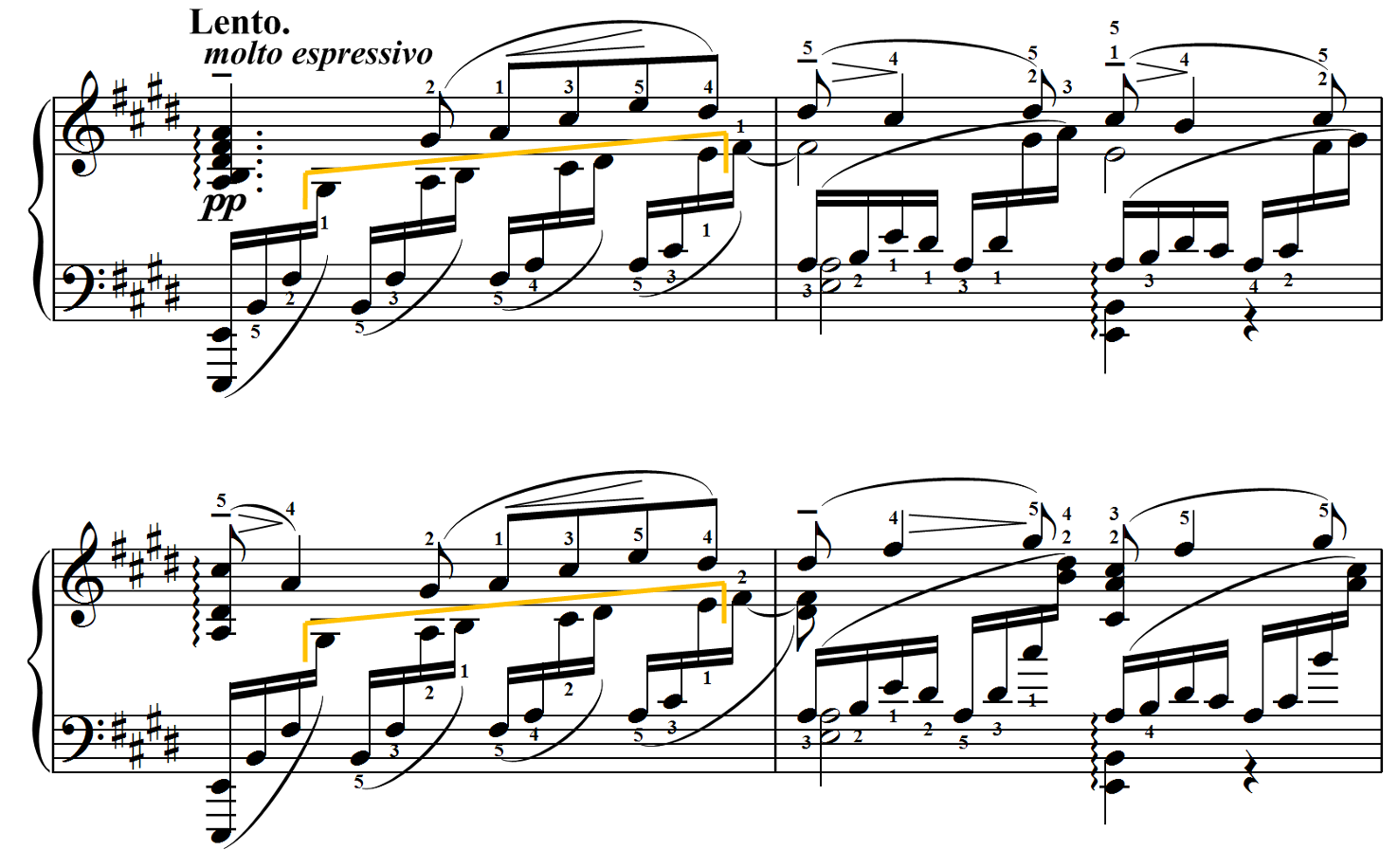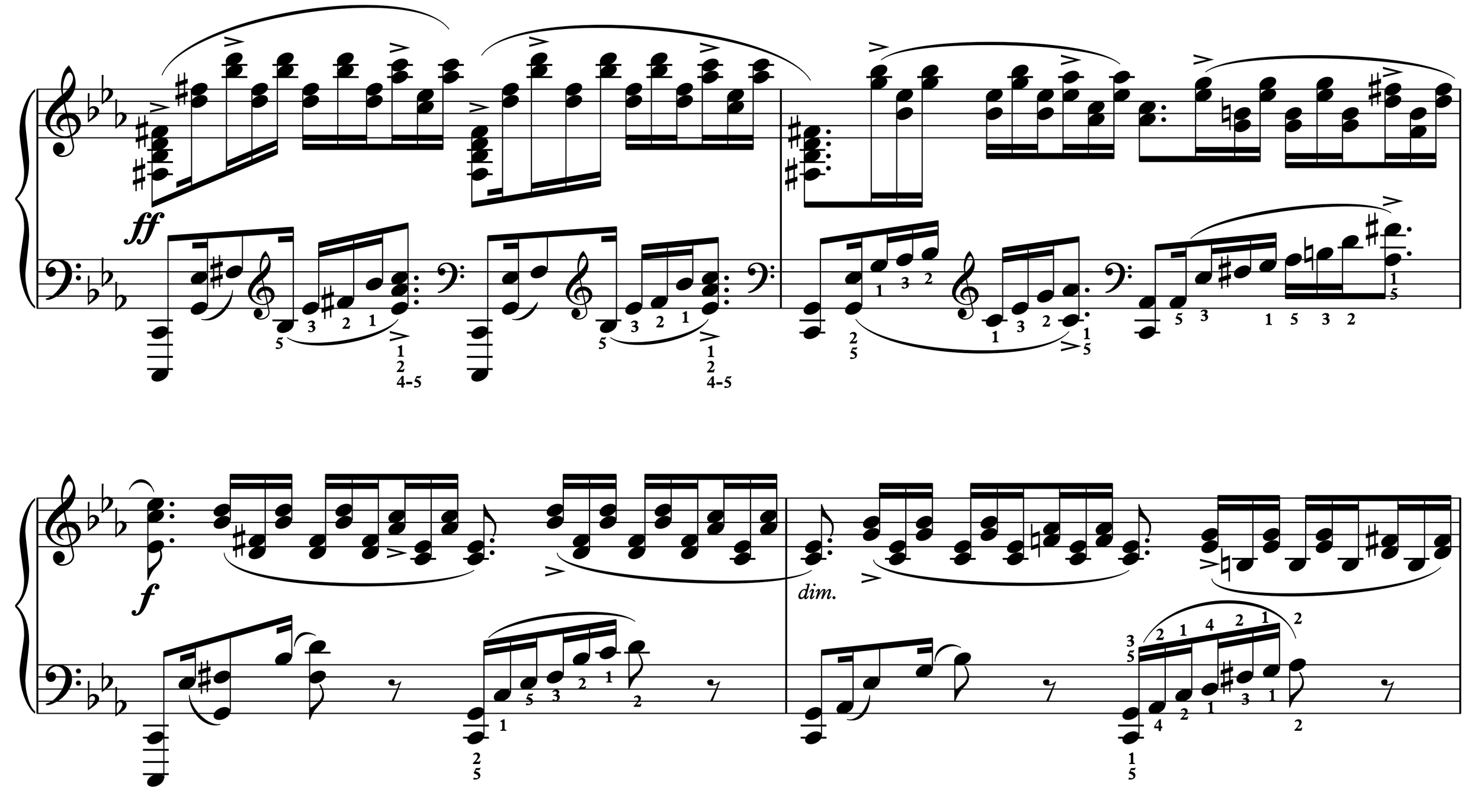Submitted by Seolyeong Jeong
Published on 8/23/2021
“I repeat the fingering of 3/1 to let the top of the chord in the second measure be played with 5. I rearrange the hands in the second measure for the sake of bringing out the melody.”

Submitted by Seolyeong Jeong
Published on 8/23/2021
“I repeat the fingering of 3/1 to let the top of the chord in the second measure be played with 5. I rearrange the hands in the second measure for the sake of bringing out the melody.”

“By keeping most of the 16th notes in the left hand, the right hand is simplified so you will be free to focus on legato and phrasing.”
Submitted by Michael Lenahan
Published 5/25/2020

“By keeping most of the 16th notes in the left hand, the right hand is simplified so you will be free to focus on legato and phrasing.”
Submitted by Michael Lenahan
Published on 5/25/2020

Submitted by Michael Lenahan
Published on 5/25/2020

Submitted by Perry Zhou
Published on 5/20/2025
“The voicing of the middle line towards the end of this Etude proves to be more effective with hand redistribution (and relieves the left hand from all those distances.) Particularly between the 4th and 5th eighth notes of m. 57 where the R.H. is able to hold the A to connect to the G (LH) keeping the line.”

Submitted by Perry Zhou
Published on 5/25/2025
“This was one of the pesky sections of the final etude of Op. 33; here are my ideal fingerings. Notice in the first beat unlike the right hand, which utilizes the distance between the 1st and 2nd fingers for easier grouping (5-4-3-2), the LH has to make do with (1-2-3-1) since the 4th and 5th fingers don’t have the distance.”


Submitted by Brian Marks
Published on 3/8/2023

Submitted by Brian Marks
Published on 3/8/2023

Submitted by Brian Marks
Published on 3/8/2023

Submitted by Brian Marks
Published on 3/8/2023

Submitted by Brian Marks
Published on 3/8/2023

Submitted by Brian Marks
Published on 3/8/2023

Submitted by Brian Marks
Published on 3/8/2023

Submitted by Brian Marks
Published on 3/8/2023

Submitted by Brian Marks
Published on 3/8/2023

Submitted by Brian Marks
Published on 3/8/2023

SPECIAL COLLECTION | Dorothy Brandwein’s Ravel Fingerings
Published on 4/4/2022 with the author’s permission
First appeared in Dorothy Woster Brandwein, "Divisi Fingering in Selected Passages from Ravel's Solo Piano Works" (DMA diss., University of Missouri–Kansas City, 1981), 67.